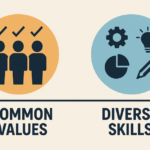LinkedIn Data Reveals Workforce Confidence Is Declining. Here’s Why
Recent LinkedIn data has highlighted a significant downturn in how secure and optimistic workers feel about their careers and financial futures. This decline isn’t isolated; whether you’re at the executive level or just starting your professional journey, the current global landscape, marked by tariffs, evolving economic policies, and the pervasive influence of emerging technologies like AI, is creating widespread uncertainty. This isn’t merely a subjective feeling; LinkedIn’s Workforce Confidence Survey and Executive Confidence Survey both registered a notable decrease in optimism. Worker confidence, measured on a scale from -100 to +100, recently fell by 10 points, dropping to +24 from +34 in March 2024. This metric reflects how secure individuals feel about job security, career advancement, and financial well-being, underscoring that workforce confidence is declining.
Ambiguity as a Factor in Why Workforce Confidence Is Declining
Confidence is a crucial asset in today’s workplace. Unfortunately, pervasive uncertainty is eroding it. Economic fluctuations represent one layer of this ambiguity. Furthermore, there’s a growing concern surrounding AI and its potential impact on jobs and industries, significantly increasing the likelihood of ambiguity becoming deeply ingrained in the workforce. This concern permeates all levels of organizational hierarchy. According to Dataiku’s Global AI Confessions Report CEO Edition, in collaboration with Harris Poll, a striking 74% of CEOs believe they risk job loss within two years if they fail to deliver measurable AI-driven business results. Additionally, 80% express worry that AI deployments could inadvertently harm employees or customers. Given this environment where workforce confidence is declining due to ambiguity, silence from leadership is not a viable strategy. Leaders must prioritize transparency and foster open communication. While external economic forces are beyond anyone’s control, setting a clear and reassuring tone within your organization is crucial. This sense of control and transparent communication will help alleviate emotional burdens and strengthen psychological safety across your workforce.
Environmental Erosion Contributing to Declining Workforce Confidence
The adage “Environment is everything” holds significant truth. Culture, surroundings, and shared values profoundly influence how individuals feel and perform. In the current climate, many employees are grappling with financial strain, rising living costs, and the postponement of significant personal milestones like homeownership or starting a family. The workplace, where individuals spend a considerable amount of their time, has the potential to either mitigate or exacerbate these pressures. While leaders cannot resolve all external challenges contributing to why workforce confidence is declining, they can significantly influence the internal environment. Ralph Lauren CEO Patrice Louvet recently described their company as being “in the dream business,” emphasizing that they sell not just products but also feelings, experiences, and stories. Too many organizations have prioritized efficiency at the expense of connection and culture, ultimately sacrificing their unique cultural identity and narrative. While political landscapes are beyond leadership’s control, cultivating a workplace where morale is actively nurtured and not neglected or taken for granted is a critical step in combating the decline in workforce confidence.
Stagnation as a Driver of Declining Workforce Confidence
In times of uncertainty, there’s a natural tendency to gravitate towards familiar and safe routines. However, doing so carries the risk of becoming entrenched in outdated practices. As Jeff Bezos emphasized in his final Amazon shareholder letter, “Differentiation is survival,” noting that the universe inherently pushes towards typicality. Organizations that cease to evolve risk losing market share, competitive edge, and ultimately, their people, contributing to the sense that workforce confidence is declining. Uncertainty should not lead to paralysis; instead, it should serve as a catalyst for innovation and creativity. This period of change and uncertainty presents an opportune moment to explore small yet strategic adjustments: pilot programs, experimental compensation models, and new wellness initiatives to identify potential positive sparks. These initiatives don’t need to be sweeping or costly. The data clearly indicates that workforce confidence is declining, painting a picture of a workforce operating in a state of survival. However, even amidst turbulence and uncertainty, leaders and teams possess significantly more agency than they often perceive. While global events are uncontrollable, the way you lead, communicate, and support your people is within your control, and that is what ultimately holds the most significance.
Credit: Forbes.com








